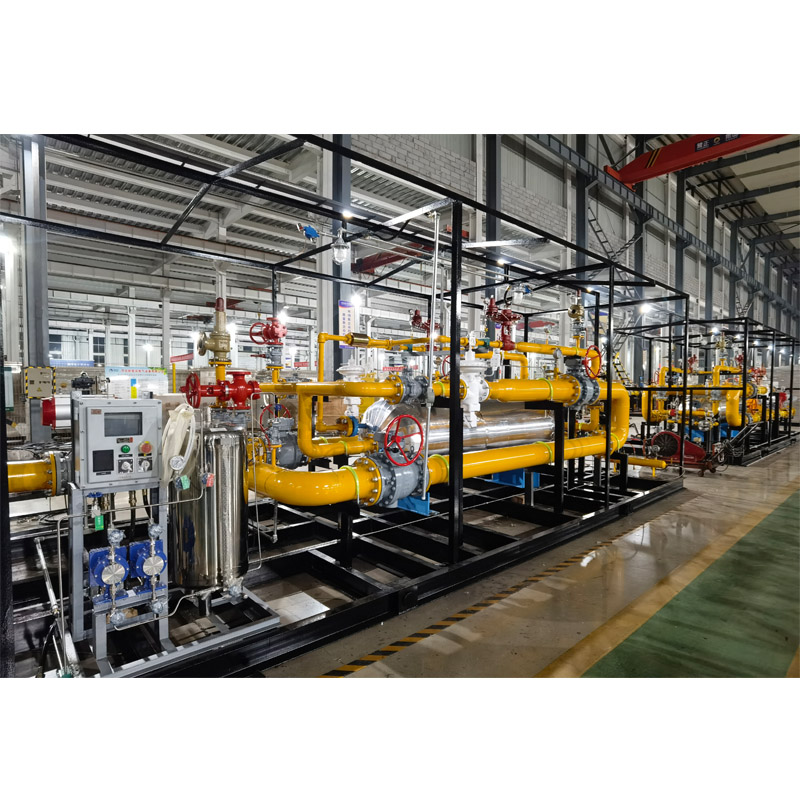
Nov . 06, 2024 22:14
Back to list
Natural Gas Supply and Distribution Facilities Overview and Insights
Understanding Natural Gas Distribution Stations
Natural gas is an essential energy resource that plays a vital role in powering homes, industries, and businesses across the globe. As demand for cleaner energy sources grows, natural gas has emerged as a prominent alternative to coal and oil, thanks to its lower emissions and efficiency. At the heart of the natural gas supply chain lies the natural gas distribution station, a critical component that ensures the safe and efficient delivery of this resource to end-users.
A natural gas distribution station acts as a pivotal hub in the natural gas infrastructure. These stations are strategically located within a region to receive natural gas from transmission pipelines, which transport the gas from production areas to various distribution centers. The process begins with large diameter pipelines carrying high-pressure gas from production sites or processing plants. Upon reaching the distribution station, the gas undergoes several key transformations.
First and foremost, the gas is reduced in pressure. High-pressure gas poses safety risks and can damage distribution networks if not properly managed. Therefore, the gas is directed through pressure-reducing regulators, which safely decrease the pressure to levels appropriate for local distribution systems. This step is crucial in ensuring the integrity of the gas supply network, as it minimizes the risk of leaks and other safety incidents.
Once the pressure is adjusted, the natural gas distribution station may also incorporate odorization processes. Natural gas is naturally odorless, making it challenging to detect leaks. To circumvent this issue, a harmless chemical known as mercaptan is added to the gas, imparting a distinct odor often described as similar to rotten eggs. This odorization is a vital safety measure, enabling consumers and utility workers to identify gas leaks quickly and take appropriate action.
natural gas distribution station

After these adjustments are made, the natural gas enters the distribution system, a network of smaller pipelines that transport the gas directly to residential, commercial, and industrial users. This network is extensive and carefully designed to ensure that natural gas can reach every corner of the service area. Distribution stations play a crucial role in managing this network, monitoring gas flow, pressure, and quality to ensure a consistent supply.
Moreover, natural gas distribution stations are equipped with advanced technology to enhance operational efficiency and safety. Supervisory Control and Data Acquisition (SCADA) systems are commonly used to monitor and control station operations remotely. This technology enables operators to track gas flow rates, detect anomalies, and respond swiftly to any issues that may arise. Consequently, these advanced systems play a significant role in preventing safety hazards and maintaining a reliable gas supply.
In addition to their operational functions, natural gas distribution stations must also adhere to strict regulatory standards. Agencies such as the Pipeline and Hazardous Materials Safety Administration (PHMSA) in the United States enforce regulations that govern the safe operation of natural gas distribution systems. These regulations cover various aspects, including pipeline integrity management, personnel training, and emergency response protocols. Compliance with these standards is essential to ensure the safety of employees, the public, and the environment.
As the world continues to shift toward sustainable energy solutions, the role of natural gas distribution stations is likely to evolve. The integration of renewable energy sources, such as biogas or hydrogen, into the existing natural gas infrastructure may require retrofitting or upgrading distribution facilities. This transition presents both challenges and opportunities for the industry, as it seeks to balance the growing demand for cleaner energy with the need for reliability and safety in gas distribution.
In conclusion, natural gas distribution stations are essential components of the energy infrastructure, providing crucial services that facilitate the safe and efficient delivery of natural gas. These stations ensure that this vital resource reaches homes and businesses while maintaining high safety standards and operational efficiency. As the energy landscape continues to change, the evolution of natural gas distribution stations will be at the forefront, adapting to meet the demands of a more sustainable future. Understanding their significance underscores the critical role these facilities play in our daily lives and the broader energy ecosystem.
Next:
Latest news
-
Safety Valve Spring-Loaded Design Overpressure ProtectionNewsJul.25,2025
-
Precision Voltage Regulator AC5 Accuracy Grade PerformanceNewsJul.25,2025
-
Natural Gas Pressure Regulating Skid Industrial Pipeline ApplicationsNewsJul.25,2025
-
Natural Gas Filter Stainless Steel Mesh Element DesignNewsJul.25,2025
-
Gas Pressure Regulator Valve Direct-Acting Spring-Loaded DesignNewsJul.25,2025
-
Decompression Equipment Multi-Stage Heat Exchange System DesignNewsJul.25,2025

